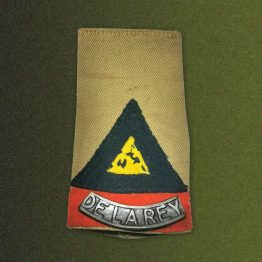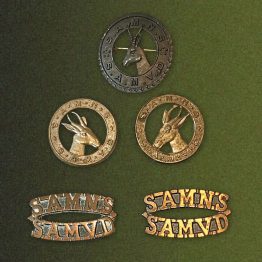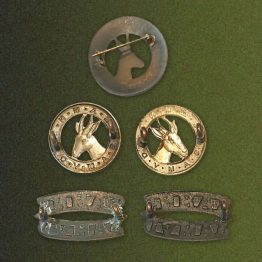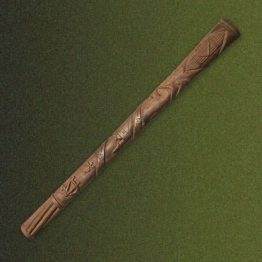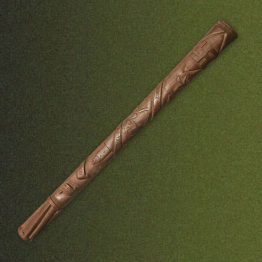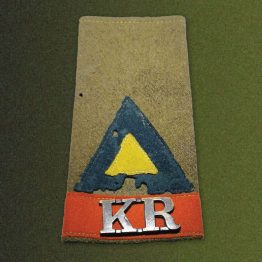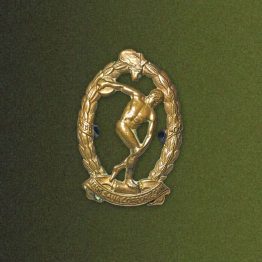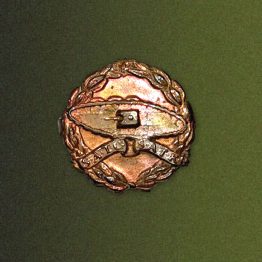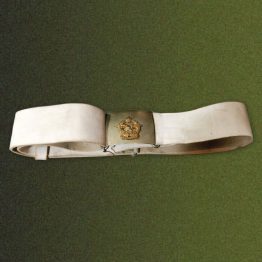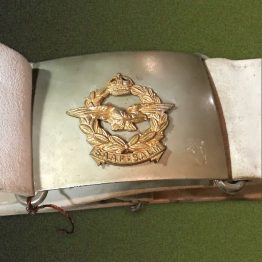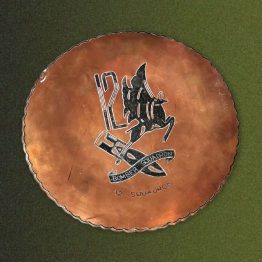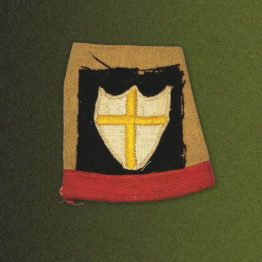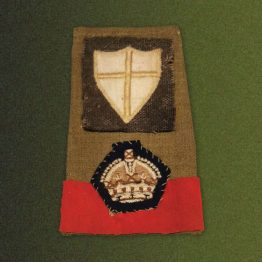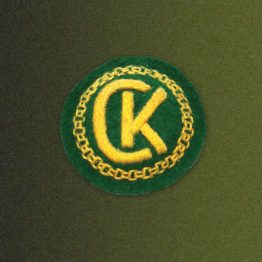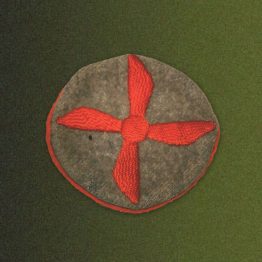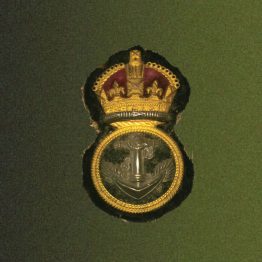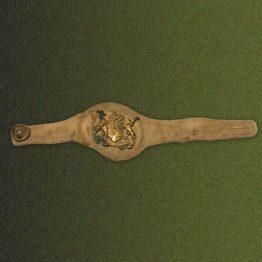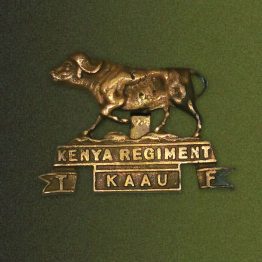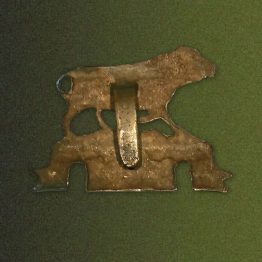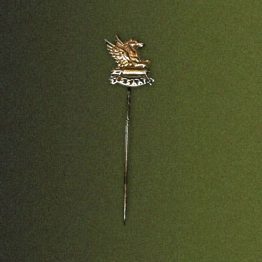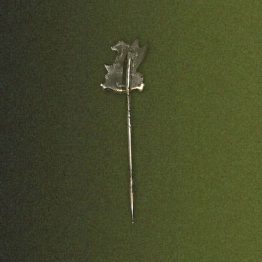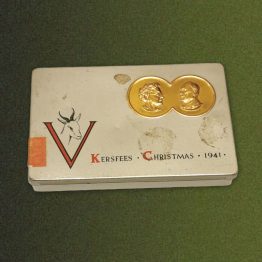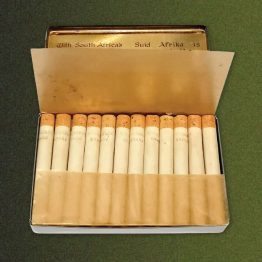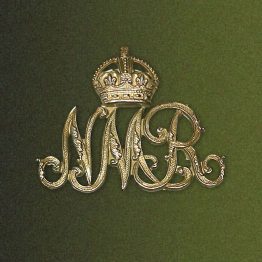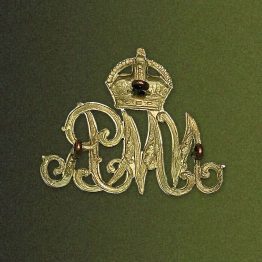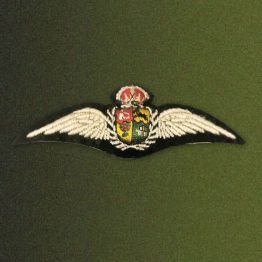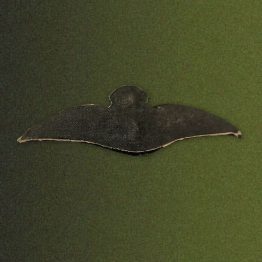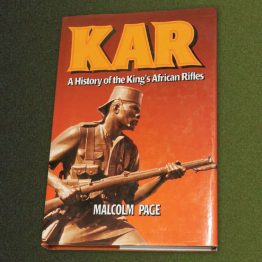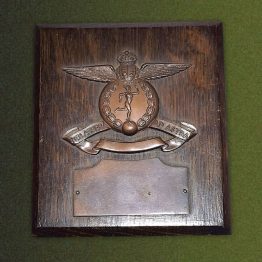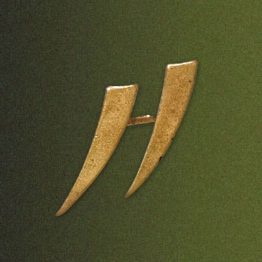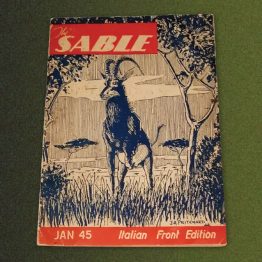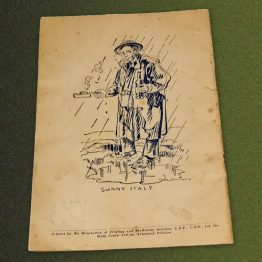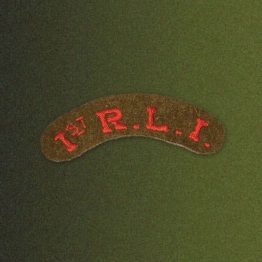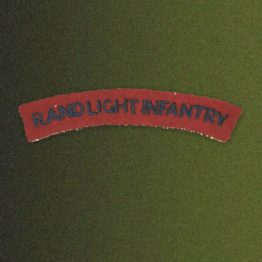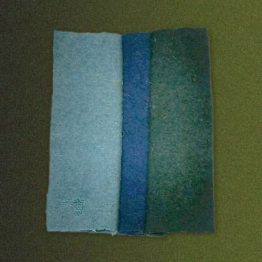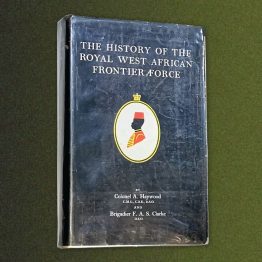World War II 1939 - 1945
Showing 61–90 of 492 resultsSorted by latest
-
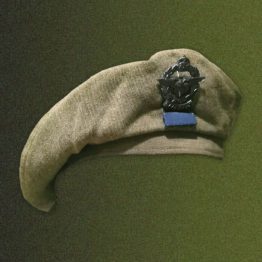
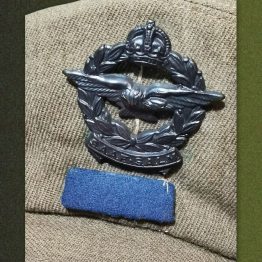 Add to cartMORE INFO
Add to cartMORE INFOSAWW11HG1033 SAAF Regiment Beret
$250.00SAAF badge and blue cloth balkie original to the beret.
Size 55
The SAAF Regiment:
The SAAFs excellent recruiting Campaign and failure of the Miles Master as a training aircraft led to a huge backlog of pupils. As a result many recruits were diverted to 30 Armoured Commando & 31 Armoured Car Commando, SAAF for Armoured Car courses. Upon the disbandment of 31 Armoured Car Commando, SAAF in May 1943, the remaining Unit became 30 Armoured Car Commando, SAAF. The Unit was renamed the SAAF Regiment on 1 August 1943, its task being the defence of airfields and the capture of enemy aerodromes. The SAAF Regiment moved North soon afterwards and, with the gradual loss of enemy air superiority in 1944, airfield defence became less of a priority. On 17 January 1945 the SAAF Regiment merged with the Natal Mounted Rifles to become the NMR/SAAF, a liaison which lasted until the end of World War Two.
Natal Mounted Rifles (NMR), SAA:
On June 22nd, 1944, men of the 1/12th LAA Regiment, SAAF were transferred to the NMR/SAAF Recce Battalion to act as an attached Infantry component to help counter the threat of German Panzerjäger parties & Anti-Tank ambushes. In November 1944, the NMR/SAAF had a temporary phase where each Squadron was organised with 1 Tank Platoon & 3 Infantry Platoons before converting completely to Infantry by January 17th, 1945. The NMR continued to use the term Squadron for each Company until the end of the War.
Rare beret
-
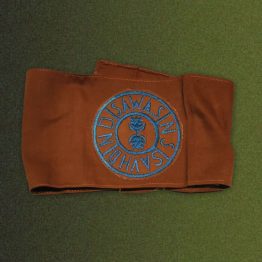 Add to cartMORE INFO
Add to cartMORE INFOSAWW11UNI1312 South African Womans Auxiliary Service Arm-Band
$120.00Brown cloth with embroidered badge
By December, 1943 60,757 SAWAS women volunteers had enlisted at 483 branches in every corner of South Africa and South West Africa
All the work done by SAWAS was voluntary and nobody, including the Auxiliaries and officers, received any payment for work done
-
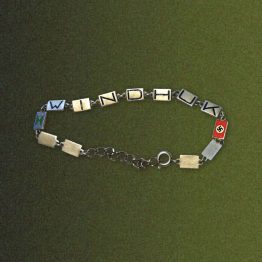 Add to cartMORE INFO
Add to cartMORE INFOSAWW11OTH1508 German Liner Windhuk Bracelet
$120.00Complete with 3rd Reich and Woermann liner flags in enamel
Windhuk is the name of a liner built between 1936 and 1937 at the Blohm & Voss shipyard in Hamburg. The construction of the ship and her sister Pretoria was an initiative of the Nazi regime. The ships were to attract international passengers and provide the German economy with foreign currency. Windhuk went to the Woermann Line. It was a German company, serving the line around the African continent. The Windhuk went on her maiden voyage to South Africa in April 1937 and had a successful career until the start of World War II. At that point, the ship was moored at Lobito, Angola. The ship waited there until December 1939. Then, superficially disguised as a Japanese ship, she crossed the South Atlantic to search a safe harbor in Santos, Brazil. Many German merchant ships had moored in Santos at the time, due to the good relations Brazil had with Germany. But those diplomatic ties deteriorated quickly and broke in August 1942. Brazil then took possession of the Windhuk. But, before that happened, her crew severely sabotaged the ship, destroying most of her systems and the engines beyond repair. Brazil sold the ship to the US Navy. She was towed to Río de Janeiro in early 1943 where she was repaired and a new diesel engine installed. In March of that year the ship was seaworthy and sailed to Norfolk, Virginia, to be transformed in a troopship and become USS Lejeune. From June 1944 to the end of the war, she made 10 Atlantic round-trips to support the war effort in Europe. In the aftermath of the war, she made 9 round-trips more as part of the Operation Magic Carpet. Between 1946 and 1947 she did four round-trips of the Pacific. In February 1948 she joined the Pacific Reserve Fleet in Tacoma, Washington. After having transported over 100.000 troops in her career, the Lejeune was struck from the Naval Register in 1957 and finally scrapped in 1966.
Rare

